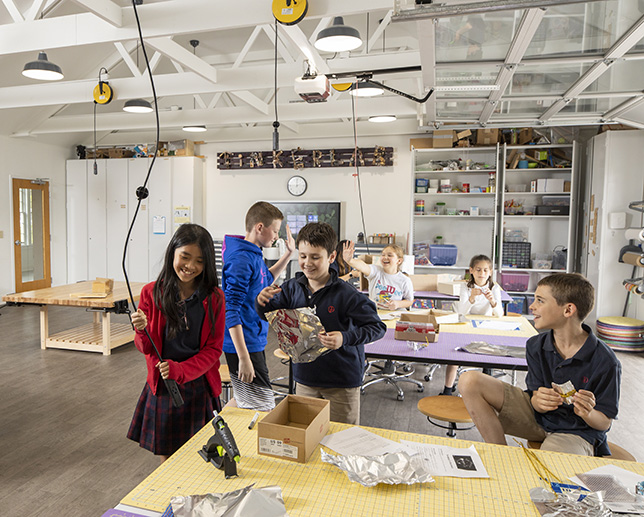A "Tinker Lab" for Young Students Opens in Pa. School
- By Yvonne Marquez
- 09/17/19
Germantown Academy, a PreK-12 private school in Fort Washington, Pennsylvania, recently gained a new makerspace aimed at younger students. In the makerspace, known as the “Tinker Lab,” PreK-5 students are able to problem solve through hands-on activities and be more engaged in learning.

The Tinker Lab is equipped with a laser cutter, 3-D printer, workstations, an industrial sink, kitchenette and hand tools. The space used to be a PreK-2 grade space but as part of their improvements, the school decided to expand the space so that all students in the Lower School would be able to use it.
“All kids really love using their hands and making and building, so this space allows for that movement and that engagement to happen.” Jessica Killo, PreK-12 STEAM Coordinator, said in a video about the Tinker Lab.
The makerspace, designed by 1100 Architect, a New York-based design firm, includes a garage door for indoor-outdoor use and that allows natural light into the room.

In addition to the Tinker Lab, 1100 Architect renovated the Lower School’s entrance and parent gathering space, science classrooms and corridors. In 2016, the firm also upgraded a computer lab and part of the library into the Beard Center for Innovation, a makerspace and robotics lab.
“The new Tinker Lab provides something so important to young students — a place to be creative, to test ideas, to collaborate with peers, and to understand classroom lessons in tangible ways,” Gwen Conners, lead designer of the firm’s projects at Germantown Academy, said in a press release. “The Tinker Lab and the Beard Center for Innovation allow students of all ages a chance to engage in hands-on learning, and they help distinguish Germantown Academy as a leader of 21st century education.”
About the Author
Yvonne Marquez is senior editor of Spaces4Learning. She can be reached at [email protected].